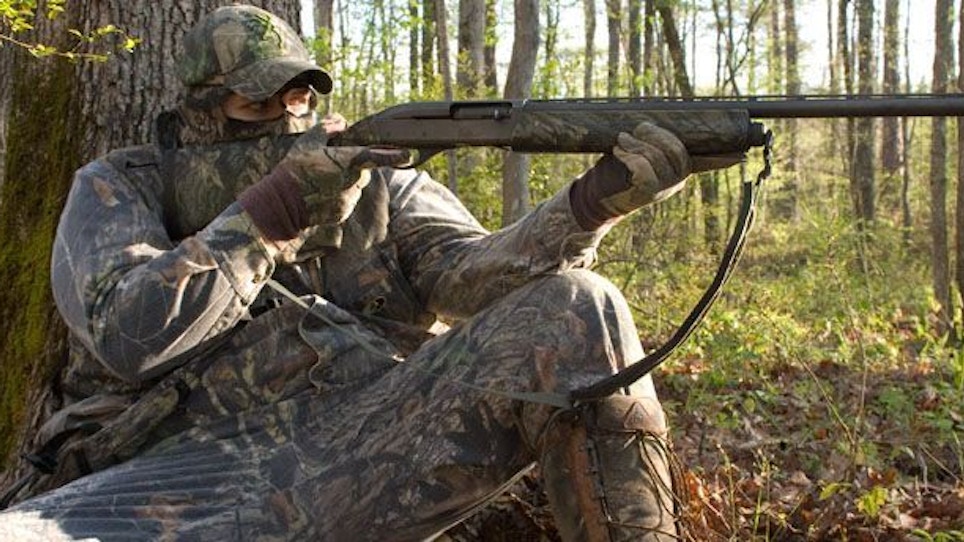1. Leave the area if you suspect there's another hunter already working the same bird.
2. Resist the urge to stalk turkey sounds. It is nearly impossible to sneak up on a turkey. It is also unethical and could lead to an accident.
3. Select a spot that is in open timber rather than thick brush: wearing camouflage clothing and eliminating movement is more critical to success than hiding in heavy cover.
4. Sit against a large stump, blow-down, tree trunk or rock that is wider than your shoulders and higher than your head when calling wild turkeys.
5. Never wear bright colors, especially not red, white, blue or black because these are the colors of a wild turkey gobbler. Watch out for red, white or blue on your socks, t-shirts, hooded sweatshirts, hats, bandannas, etc. Wear dark undershirts and socks, and pants long enough to be tucked into boots.
6. Remain still and speak in a loud, clear voice to announce your presence to other hunters if necessary. Never move, wave or make turkey sounds to alert another hunter of your presence.
7. Keep your hands and head camouflaged when calling.
8. Maintain a clear field of view when using a camouflage blind or netting.
9. Ensure your decoy is not visible when you are transporting it. Stash the decoy in your vest and make sure the head is not sticking out. If you harvest a wild turkey during your hunting trip, you also should cover the bird's head and body when carrying it out from your hunting spot.
10. Put your gun's safety on and approach the downed bird with your firearm pointed in a safe direction after firing. Never run with a firearm.
The National Wild Turkey Federation is committed to making hunter safety a top priority. In 1991, the NWTF initiated the National Turkey Hunting Safety Task Force to complement the hunter safety efforts of state agencies, the International Hunters Education Association, the National Rifle Association and the National Shooting Sports Foundation. The task force – composed of hunting and shooting safety experts from around the country – has met three times since 1992 to develop a comprehensive hunter safety program, and has since produced and distributed more than 1 million pieces of hunting safety information.






